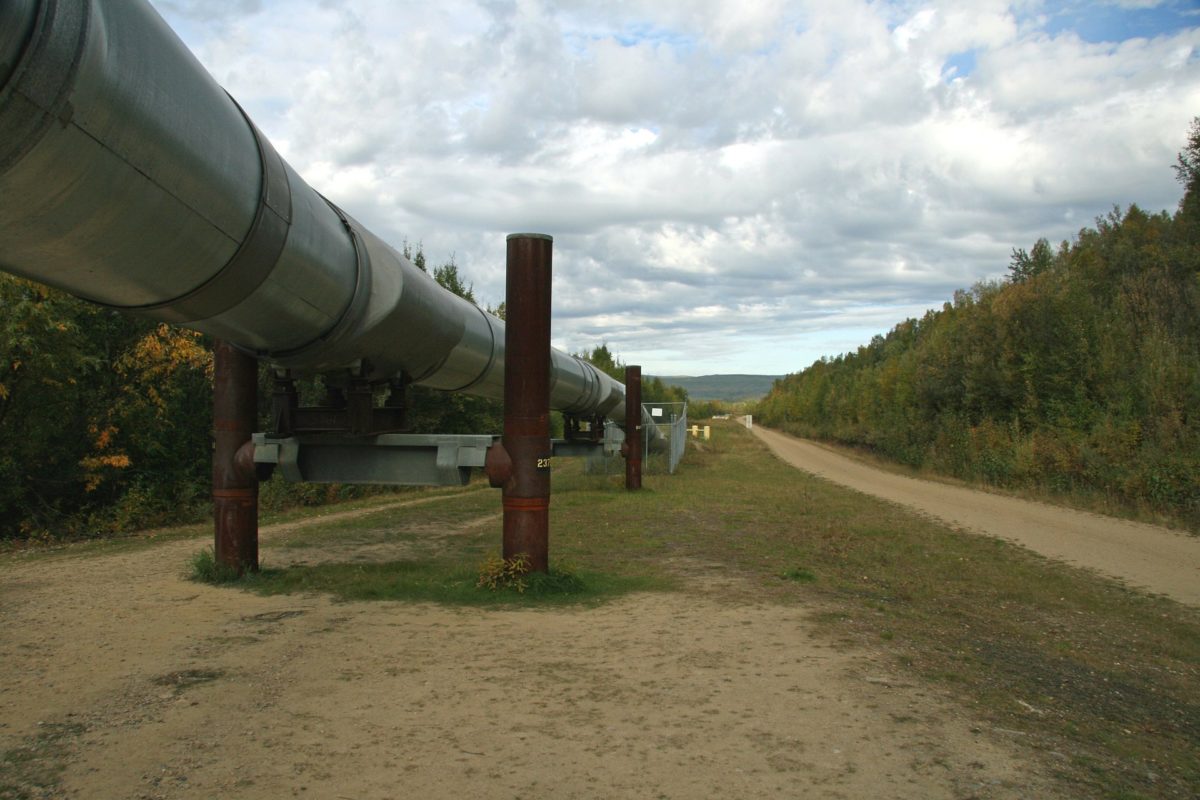Advocating for the Clean Water Act
Update – October 21, 2021
Good news! A recent ruling on the Clean Water Act (CWA) helps the Appalachian Trail — and you — by restoring power to states and tribes as they review permitting requests for pipelines, dams, and other infrastructure. This ruling will help protect the rivers, streams, and views of the Appalachian Mountains and across the United States.
The CWA helps protect and manage the rivers and streams found across the A.T. landscape and gives a vital voice to Trail states and communities in the review process. The ATC’s federal policy team has been hard at work to ensure state and tribal authority under the CWA is uncompromised in managing the recreational, natural, scenic, historic, and cultural resources of the A.T.
For more information on how this rule could have affected the A.T., see below.
The Clean Water Act Protects The Role of the States in Resource Management
At the core of the A.T.’s success as a National Scenic Trail is the cooperative management system, which respects the role of different governments, agencies, Clubs, and ATC in ensuring that the A.T. is protected forever, for all. Just like the cooperative management system, many natural resource laws are structured so that entities with the right knowledge and experience are responsible for different parts of protection and operation. The Clean Water Act is one of those such laws. Section 401 of the Clean Water Act mandates that any permit or license for infrastructure as varied as natural gas pipelines to sewage treatment plants must receive a certification from the state or tribe where the infrastructure is proposed so the infrastructure does not injure resources that state or tribe determines relevant (such as recreational resources). Section 401 is a critical tool for our state cooperative management partners to protect the A.T. Landscape and conserve lands and waters for habitation and recreation.
Under the previous administration, the U.S. Environmental Protection Agency’s (EPA) illegally used its rule-making power to restrict state and tribal authority to impact infrastructure development. The current administration has announced it will be revising the rule, and the Appalachian Trail Conservancy is working with other concerned organizations to ensure that our state and tribal partners have the authority guaranteed to them by Congress in the Clean Water Act, and affirmed many times since then by the courts. You can read our most recent comments here. The ATC expects a new, legally sound rule will be finalized by Spring 2023. On October 22, 2021, a federal district court “vacated and remanded” (in other words, invalidated and told EPA to return to the previous, 1971 rule) the Section 401 Rule. You can read that decision here.
The Clean Water Act was enacted into law in 1972 to “restore and maintain the chemical, physical, and biological integrity of the Nation’s waters.” In order to make sure that decisions with large local impacts weren’t solely dictated by people in faraway D.C., a requirement was put into the Clean Water Act that for any major infrastructure that could discharge pollutants into a navigable waters (or would feed into navigable waters), a state-level certification would need to be obtained. This part of the law, Section 401, allows states to insert state laws into federal permits and licenses — and prohibits the federal government from ignoring them. Every pipeline, dam, and wastewater discharger operated since 1972 has required a state-level 401 Water Quality Certification.
How the EPA Cut States and Tribes Out of Decision Making:

Limiting Time to Review Applications
The Clean Water Act gives states and tribes a reasonable amount of time, not to exceed one year, to evaluate applications for a Clean Water Act Certification. Unfortunately, many applicants for infrastructure, such as pipelines, submit their applications before they have all the information that the state and federal government need to present a scientifically based and legally defensible set of conditions to protect local cultural, historical, natural, and recreational resources. By eliminating the ability of states to request an application be withdrawn and resubmitted with the necessary information — as well as centrally determining at EPA what a “reasonable” amount of time is — the EPA is looking to turn the 401 Certification process into a rubber stamp.

Restricting the Scope of Review
The now-vacated rule declares that states may only consider the information that the federal agency believes is relevant, rather than the information the state believes is relevant. By removing the ability of the states to solicit necessary information from developers, power is further centralized in Washington, D.C. and the concerns of local communities are ignored. The Federal Energy Regulatory Commission (FERC), which is in charge of approving interstate energy infrastructure like pipelines, will not consider the impact to the local recreational economy, such as scenic views or visitor access. And if states can’t consider those things, no one will.


Giving the Federal Government the Final Word
As if limiting the types of information states may consider and the amount of time they have to consider them isn’t enough, the now-vacated rule does what litigation has been unable to accomplish for the nearly fifty-year history of the Clean Water Act — it gives the federal agency issuing the permit or license the ability to remove a condition it doesn’t believe is within the scope of the Act. Empowering the EPA or FERC or the Army Corps to delete entire sections of a state’s Water Quality Certification isolates the true oversight in the federal government: which is exactly what Section 401 was enacted to prevent.
Section 401 has been cited by the Supreme Court as a model of “cooperative federalism,” or the federal and state governments working together, rather than against each other. The idea of cooperative federalism is very familiar to those of us on the A.T., where our system of cooperative management is ingrained in everything we do. Making a fundamental change today to what states and tribes are able to consider in their Water Quality Certifications runs the real risk of preventing substantive review of community and public health impacts resulting from major infrastructure development.
As the current system has been in place for nearly fifty years, by limiting the amount of time states have and limiting the information they can make decisions off of, states and local communities may simply be ignored. The only community engagement necessary will be visits to D.C., to make sure bureaucrats at the Federal Energy Regulatory Commission, Army Corps of Engineers, and Environmental Protection Agency are consulted. Those are all long-distance calls.
The now-vacated Clean Water Act Section 401 regulations redistribute power so that state governments, which represent local communities, can be gamed by developers and industry insiders. Restricting their ability to collect information and make thoughtful decisions based on local needs does not serve the public good.
Contact your elected officials today and let them know you support Section 401 of the Clean Water Act as written, giving states a voice in the protection of places like the Appalachian Trail.
Discover More

Be a Voice for the Trail
Advocacy
Whether on the Appalachian Trail or on Capitol Hill, obstacles arise every day that threaten the Appalachian Trail. We're here to protect it. Learn more about how we stand up for the A.T. and it's surrounding landscape — and how you can help.

Stay Informed
Latest News
Read the latest news and updates about the Appalachian Trail and our work to protect it.

ATC's Official Blog
A.T. Footpath
Learn more about ATC's work and the community of dreamers and doers protecting and celebrating the Appalachian Trail.
